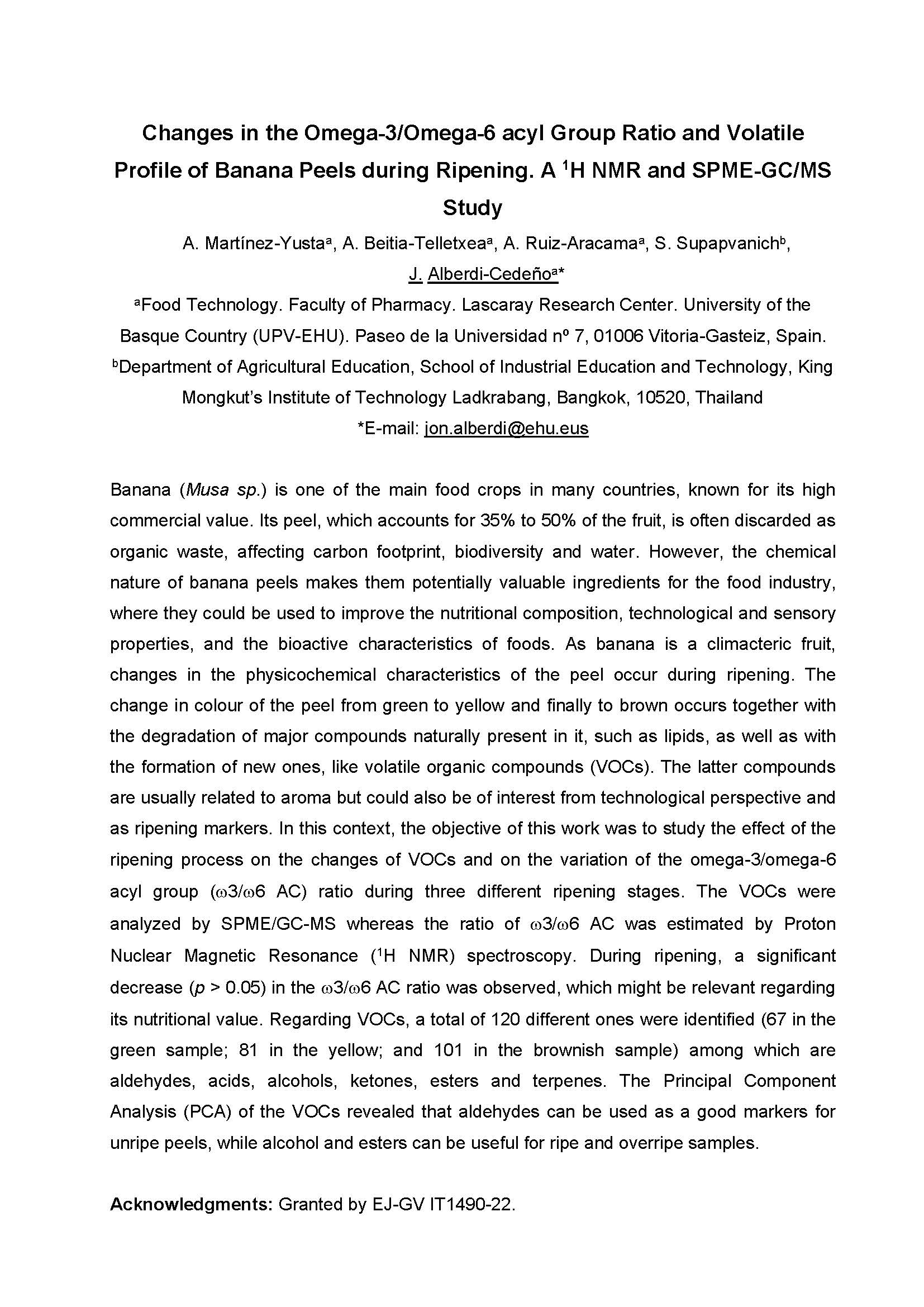Banana (Musa sp.) is one of the main food crops in many countries, known for its high commercial value. Its peel, which accounts for 35% to 50% of the fruit, is often discarded as organic waste, affecting carbon footprint, biodiversity and water. However, the chemical nature of banana peels makes them potentially valuable ingredients for the food industry, where they could be used to improve the nutritional composition, technological and sensory properties, and the bioactive characteristics of foods. As banana is a climacteric fruit, changes in the physicochemical characteristics of the peel occur during ripening. The change in colour of the peel from green to yellow and finally to brown occurs together with the degradation of major compounds naturally present in it, such as lipids, as well as with the formation of new ones, like volatile organic compounds (VOCs). The latter compounds are usually related to aroma but could also be of interest from technological perspective and as ripening markers. In this context, the objective of this work was to study the effect of the ripening process on the changes of VOCs and on the variation of the omega-3/omega-6 acyl group (3/6 AC) ratio during three different ripening stages. The VOCs were analyzed by SPME/GC-MS whereas the ratio of 3/6 AC was estimated by Proton Nuclear Magnetic Resonance (1H NMR) spectroscopy. During ripening, a significant decrease (p > 0.05) in the 3/6 AC ratio was observed, which might be relevant regarding its nutritional value. Regarding VOCs, a total of 120 different ones were identified (67 in the green sample; 81 in the yellow; and 101 in the brownish sample) among which are aldehydes, acids, alcohols, ketones, esters and terpenes. The Principal Component Analysis (PCA) of the VOCs revealed that aldehydes can be used as a good markers for unripe peels, while alcohol and esters can be useful for ripe and overripe samples.
Acknowledgments: Granted by EJ-GV IT1490-22.
